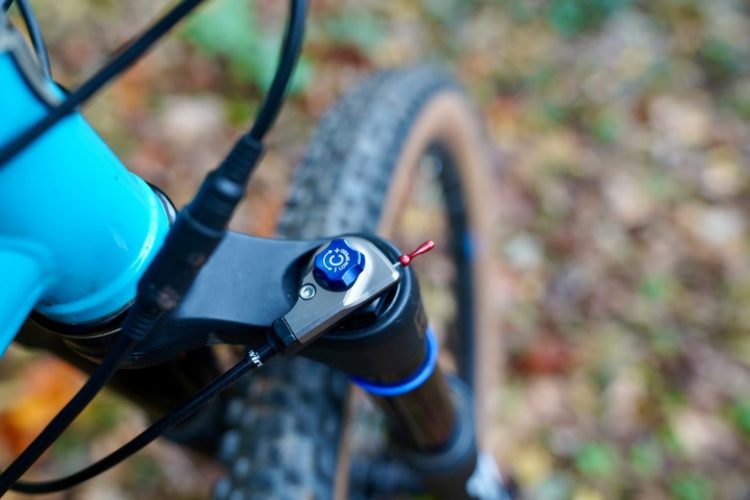If you are gassing out too quickly when climbing, here are 9 things you can do to help you climb better on your mountain bike:

1. Pace your breathing.
Race horses breathe in and out with every gallop. Focus on keeping your inhaling and exhaling at a good pace when you are exerting yourself during the climb. After the climb, continue a good breathing pace to “catch up” before you hit the next climb.
2. Get mental.
Good climbing technique is often a mental game. If you look up and see a long climb ahead, often the best thing to do is to break it down into manageable sections. Sometime you have to push through some of the burning legs feeling, and only focus on the tree up ahead near the big boulder. When you are almost there, then you switch your focus to the gully further up, etc. Breaking the climb into pieces makes it much more manageable mentally, instead of the whole climbing being one massive monster that you cannot conquer.
3. Stay seated.
Getting off your seat is sometimes necessary for a short burst of speed, but caution! Use this technique very sparingly, because it will fatigue you very quickly. Staying seated is much more efficient, since you don’t have to support your body weight. If the climb is really steep and you feel the front wheel wanting to lift, shift your sitting position farther forward on the horn of your seat and lean a bit more forward.

4. Maintain a good cadence.
A higher cadence on a lower gear is more efficient over the long haul than a higher gear with a cadence that is too low. Trying to power your way through a taller gear might seem faster, but it will drain your energy reserves more quickly. When you maintain a higher cadence and stay in the aerobic zone, your muscles can clear out the lactic acid to prevent a buildup. But if you push a really high gear at a slower cadence, chances are you’ll go anaerobic and your muscles won’t be able to clear out that lactic acid. Consequently, you’ll burn out too soon.
5. Maintain momentum.
Try to not slow down too much for turns and obstacles during the climb. Repeatedly getting yourself back up to speed uses up a lot of energy. This also means picking up speed before you hit the steep sections, so that you can carry more momentum into them.
6. Stiffen the fork and shocks.
If you have an adjustable fork and shock on your bike and the trail has plenty of climbs, dial down the fork compression and set the shock to climb mode. As long as there aren’t a bunch of technical sections coming up on the trail where my suspension is going to get a real work-out, I usually stiffen up my fork and shock. This makes the ride harsher but it also makes climbing more efficient. A soft, squishy ride is great for maintaining control on the bumpy stuff and on downhills, but is generally not as efficient for climbing.

7. Stay well hydrated.
I always pre-hydrate myself before I even start riding. I then continue to hydrate during the ride. I remember my soccer coach in high school always drilling it into us: “It takes 20 minutes for that water that you just drank to get to your system. So drink a very good amount of water 20 minutes before you start the game.” This also means not to wait until you are thirsty to get your next drink during the ride. If you do that, you will never be able to keep up with your hydration needs.
8. Ride more often.
If you’re still having issues making it up the climbs, focus on getting yourself into better cardio shape. You may just need to up your cardiovascular activities. I know that usually at the end of the season, I can do the same climbs much easier than I did at the beginning of the season.
I know that many of us (myself included) can’t ride as often as we’d like. In order to keep my aerobic fitness up, I now also do brisk walks of 2-3 miles around 3 times per week. During these brisk walks, I mix in 1-minute slow jogs just to get my heart rate up (just like circuit training on a tread mill). These walks are just another really awesome way to improve my cardio. I just started doing this a few months ago, and it has made a huge difference for my riding.
9. Make sure your tires are properly inflated.
Last time I hopped onto my bike, I noticed that my ride was slow and I was pushing myself with more effort than normal. I then noticed that my rear tire was a bit noisy. I stopped and checked my tire pressures (I always ride with a small pump and gauge). It read 15 psi front and 12 psi back. I pumped them both up to 28 psi and it made a huge difference in the amount of effort that it took to get up to and maintain speed. I probably also just avoided a pinch flat. Now-a-days I check my tire pressures much more often.
Your turn: What’s your #1 personal tip for better, more efficient, climbing?
[see_also id=”190707″][/see_also]

















